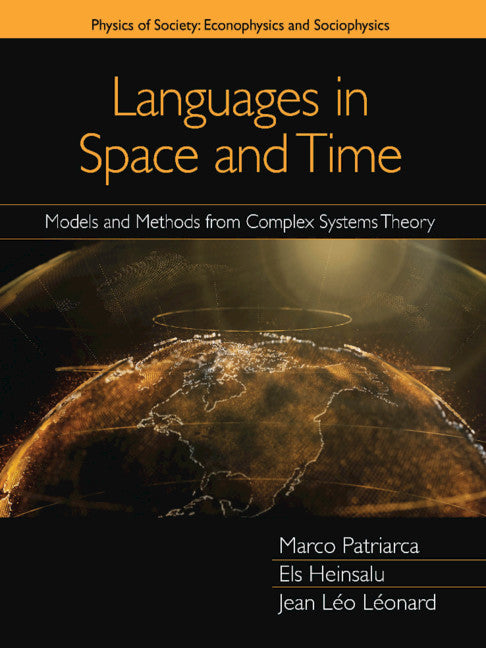Freshly Printed - allow 4 days lead
Couldn't load pickup availability
Languages in Space and Time
Models and Methods from Complex Systems Theory
Demonstrates how complexity theory and statistical mechanics help define the language groups and model the language dynamics.
Marco Patriarca (Author), Els Heinsalu (Author), Jean Leó Leonard (Author)
9781108480659, Cambridge University Press
Hardback, published 29 October 2020
220 pages
24.6 x 19.2 x 1.5 cm, 0.51 kg
This cross-disciplinary volume provides an overview of how complexity theory and the tools of statistical mechanics can be applied to linguistic problems to help reveal language groups, and to model the evolution and competition of languages in space and time. Illustrated with a series of case studies and worked examples, it presents an interdisciplinary framework to enable researchers from the mathematical, physical and social sciences to collaborate on linguistic problems. It demonstrates the complexity of linguistic databases and provides a mathematical toolkit for analyzing and extracting useful information from them - helping to conceptualize empirical facts better than a mere ethnographic view. Providing an important bridge to facilitate collaboration between linguists and mathematical modelers, this book will stimulate new ideas and avenues for research, and will form a valuable resource for advanced students and academics working across complex systems, sociolinguistics, and language dynamics.
Preface
1. Introduction
2. Language and languages
3. Comparison based on string metric
4. Historical glottometry
5. Introduction to languages dynamics
6. Languages evolution models
7. Languages competition models
Bibliography.
Subject Areas: Statistical physics [PHS], Complex analysis, complex variables [PBKD], Social interaction [JFFP], Computational linguistics [CFX], Sociolinguistics [CFB], Language [C]


